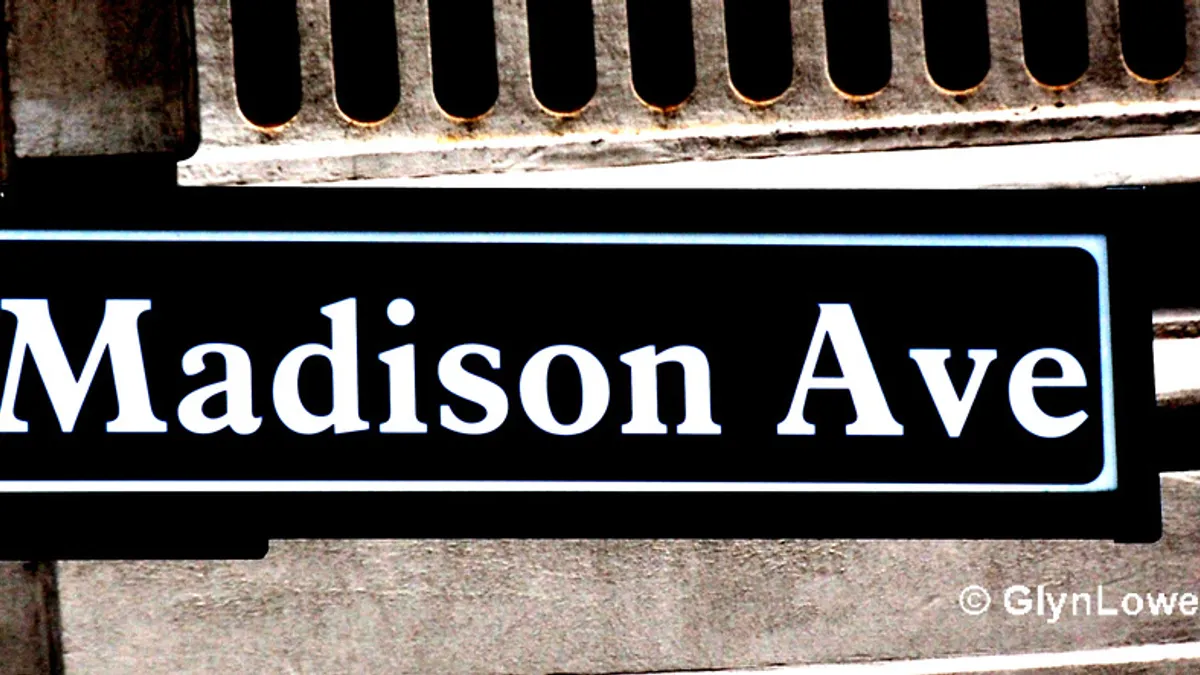Dive Brief:
- WPP's GroupM and Interpublic's Magna Global agencies both this week updated their growth predictions for the ad industry: GroupM now anticipates growth of 3.1% this year and 4.3% in 2018, per a press release. Magna Global is expecting net advertising revenues to grow 4.1% this year and 5.2% in 2018, up from a June prediction of 3.7% and 4.5% for the two years, respectively, according to The Wall Street Journal.
- Magna pointed to key events in 2018 such as the Winter Olympics, the FIFA World Cup and U.S. mid-term elections for the stronger performance, along with more dynamic ad markets in Brazil, China and Russia, per the Journal. GroupM expects six countries — the U.S., China, Argentina, Japan, India and the U.K – to drive 68% of incremental investment next year.
- GroupM said TV investment is expected to grow 2.2% next year but lose a share point in both 2017 and 2018. Digital investment is expected to grow 11.3% in 2018 and its share will increase from 34.1% this year to 36.4%. Increases in programmatic buying will follow, though not as fast as expected thanks to concerns over supply chain integrity and brand safety, with programmatic budgets estimated at 20% of digital spending, excluding social platforms. Out-of-home (OOH) will see a boost driven by informed application of data and technology. OOH grew from 6.1% share in 2016 to 6.2% this year and is expected to reach 6.3% in 2018 — its highest share since 1993, GroupM said.
Dive Insight:
Both updated forecasts point to a stronger performance for the ad industry next year, but events such as the Olympics and World Cup underscore how some of that boost might stem from distinct, cyclical factors that don't necessarily indicate healthier growth overall. Speaking at a UBS media conference earlier this week in New York City, WPP CEO Sir Martin Sorrell noted that marketers should "contain any enthusiasm" despite what appear to be positive signs, MediaPost reported. WPP cut its growth expectations for the year to zero in its most recent quarterly earnings report, pointing to how marketers will continue to consolidate their corporate structures and tighten their budgetary belts.
Other pressures affecting the ad industry include sharper competition from e-commerce companies like Amazon, which continues to steal market share from traditional CPGs and retailers, and ongoing problems with digital advertising pertaining to brand safety, iffy marketing measurement and general gaps in transparency. These trends, long-standing but especially apparent in 2017, are reflected in GroupM's indications of hampered growth for programmatic advertising.
The tactic's effectiveness has this year been called into question at several points, including when JPMorgan Chase cut back the number of websites serving its ads programmatically from 400,000 to 5,000 with little impact on business performance. More private and direct-trading marketplaces are frequently cited as a solution to these issues. OOH showing strong figures offers a bit of brighter news and underscores the higher premium marketers are putting on efforts that bridge tangible, real-world experiences with more robust digital technology.














